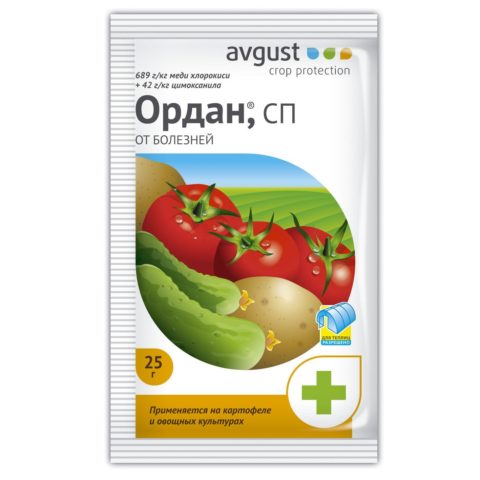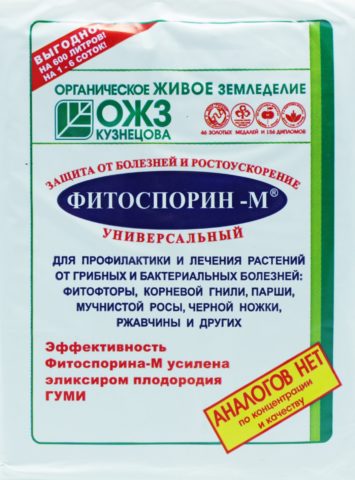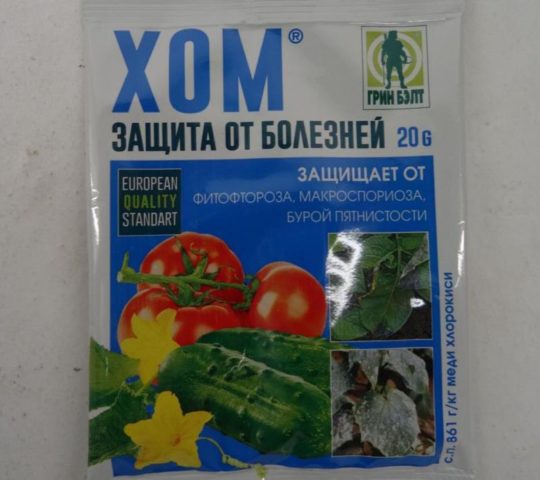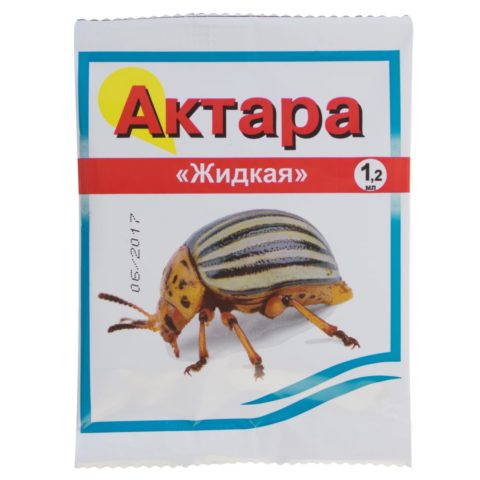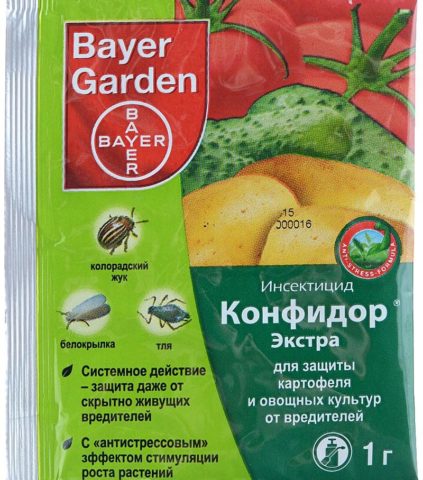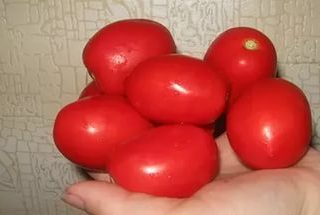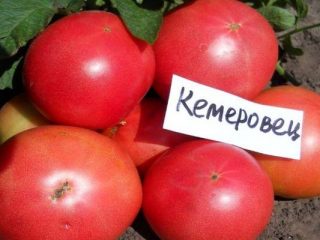Content
Tomato Incas F1 is one of those tomatoes that have successfully passed the test of time and have proven their productivity over the years. This species has a stable yield, high resistance to adverse climatic conditions and diseases. Therefore, it easily withstands competition with more modern types of culture and does not lose popularity among gardeners.

Tomato Inkas is suitable for private and industrial cultivation
Breeding history
Incas is the result of painstaking work by Dutch breeders. The purpose of its creation was to obtain a tomato that can show high yields regardless of climatic conditions and, at the same time, is characterized by an excellent fruit taste. And they succeeded. Incas was bred more than 20 years ago, and entered the State Register in 2000. Its originator is the Dutch seed company Nunhems.
Description of tomato variety Inkas F1
Incas is a hybrid crop, so its seeds are not suitable for sowing. This tomato is one of the determinant species, so its growth is ultimately limited by the flower cluster. The height of the bushes in the open field reaches 0.7-0.8 m, and in a greenhouse - 1.0-1.2 m.The hybrid forms strong, powerful shoots, but due to the high yield, they can bend under the weight of the fruits, therefore it is necessary to install support, and tie up the plant as it grows.
The leaves of this hybrid are of standard size and shape, dark green in color. Peduncle without articulation. The hybrid is prone to increased growth of stepchildren, therefore, it needs the formation of bushes. The maximum efficiency can be achieved when growing Inkas in 3-4 shoots. On each stem, 4-6 fruit clusters are formed per season.
Tomato Inkas is an early ripe hybrid. Ripening of the first tomatoes occurs 90-95 days after seed germination. The fruiting period lasts 1.5-2 months, but most of the harvest can be harvested in the first 3 weeks. Ripening of tomatoes in a brush is simultaneous. Initially, the collection should be carried out on the main stem, and then on the lateral ones. The first fruit cluster is formed above 5-6 leaves, and later - after 2. Each of them contains from 7 to 10 tomatoes.
Description of fruits
The shape of the fruit of this hybrid is pepper-shaped, that is, oval-elongated with a sharp tip. When fully ripe, tomatoes acquire a rich red color. The surface is smooth and shiny. Inkas tomatoes have a sweetish pleasant taste with a small amount of acidity.
The fruit is a medium-sized hybrid. The weight of each does not exceed 90-100 g. The flesh of Inkas tomatoes is dense, sugary, when the fruit is cut, the juice does not stand out.
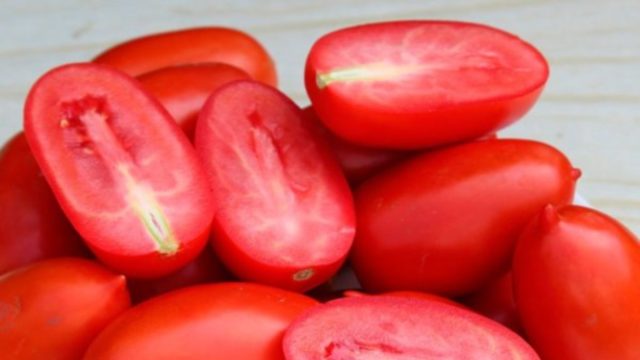
Each tomato contains 2-3 small seed chambers
In the process of ripening, Inkas tomatoes have a dark spot in the area of the stalk, but later it completely disappears. The skin is dense, thin, almost imperceptible when eaten. Inkas tomatoes are resistant to cracking even in high humidity conditions.
Inkas tomatoes can be stored for 20 days. At the same time, harvesting at the stage of technical maturity is allowed, followed by ripening at home. At the same time, the taste is completely preserved.
Tomatoes of this hybrid are resistant to burns, easily tolerate direct exposure to sunlight for a long time.
Characteristics of tomato Inkas
The hybrid, like all other types of tomatoes, has its own characteristics that should be paid attention to. This will allow you to create a complete picture of Inkas tomato, its productivity and resistance to adverse factors.
Productivity of tomato Incas and what affects it
The hybrid is characterized by a high and stable yield, and this is not affected by possible temperature extremes. From one bush, subject to the rules of agricultural technology, you can collect up to 3 kg of tomatoes. Productivity from 1 sq. m is 7.5-8 kg.
This indicator directly depends on the timely removal of the stepsons. Ignoring this rule leads to the fact that the plant wastes energy in vain, increasing the green mass, to the detriment of the formation of fruits.
Disease and pest resistance
Tomato Incas is immune to fusarium, verticilliosis. But this hybrid does not tolerate high humidity for a long period of time. Therefore, in the case of a cold rainy summer, it can suffer from late blight. Also, the fruits of Inkas, with a lack of nutrients in the soil, can be affected by apical rot.
Of the pests, the danger to the hybrid is the Colorado potato beetle at the initial stage of growth, when grown in the open field. Therefore, to maintain productivity, it is necessary to spray the bushes when the first signs of damage appear and as a prophylaxis.
Scope of the fruit
Due to their high taste, Inkas tomatoes can be used fresh, and their oblong shape is ideal for slicing. Also, these tomatoes can be used to prepare winter whole-fruit harvests with and without peels. In terms of their consistency, Inkas tomatoes are in many ways similar to the Italian varieties that are used for drying, so they can also be dried.
Advantages and disadvantages
Incas, like other types of tomatoes, has its pros and cons. This will allow you to evaluate the advantages of a hybrid and understand how critical its disadvantages are.
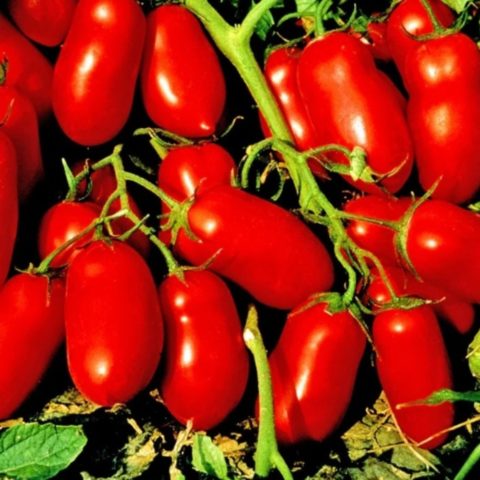
Inkas tomatoes can have either a sharp or a depressed tip
Hybrid advantages:
- stable yield;
- early ripening of tomatoes;
- excellent presentation;
- resistance to transportation;
- versatility of application;
- high natural immunity;
- great taste.
Disadvantages:
- tomato seeds are unsuitable for further sowing;
- the pulp is dry compared to salad species;
- intolerance to high humidity for a long time;
- requires pinching and tying bushes.
Features of planting and care
It is necessary to grow tomato Inkas in a seedling way, which allows you to get strong seedlings by the beginning of the season and significantly speeds up the harvest. A transplant to a permanent place should be done at the age of 60 days, so the procedure should be carried out at the beginning of March for further cultivation in a greenhouse, and at the end of this month for open ground.
This hybrid is very susceptible to lack of light and low temperature conditions at the initial stage of growth. Therefore, in order to obtain well-developed seedlings, it is necessary to provide the seedlings with optimal conditions.
Sowing seeds should be carried out in wide containers 10 cm high.For Inkas, it is necessary to use nutritious loose soil, consisting of turf, humus, sand and peat in a ratio of 2: 1: 1: 1.
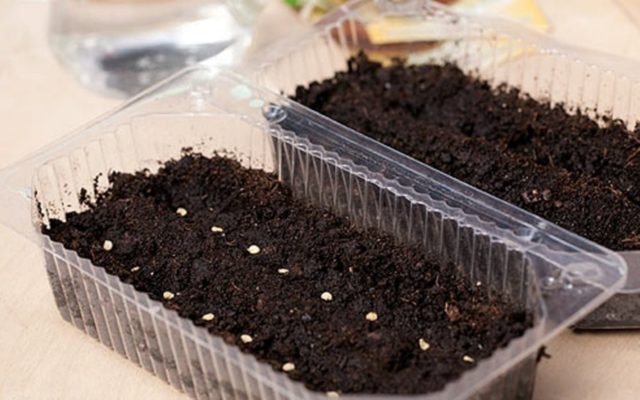
Seeds should be planted 0.5 cm deep in pre-moistened soil
After planting, the containers should be covered with foil and rearranged in a dark place with a temperature of +25 degrees for successful and fast germination. After the emergence of friendly shoots, after 5-7 days, the containers must be transferred to the windowsill and the mode must be lowered to +18 degrees for a week in order to stimulate the growth of the root system. After that, raise the temperature to +20 degrees and provide twelve hours of daylight hours. When the seedlings grow 2-3 true leaves, they should be dived into separate containers.
Transplanting into the ground should be carried out when the soil warms up enough: in the greenhouse - at the beginning of May, in the open ground - at the end of the month. Planting density - 2.5-3 plants per 1 sq. m. Tomatoes should be planted at a distance of 30-40 cm, deepening them to the first pair of leaves.
The hybrid does not tolerate high humidity, so you need to water the Inkas tomato bushes especially at the root (photo below). Irrigation should be carried out as the topsoil dries out. You need to fertilize tomatoes 3-4 times per season. For the first time, organic matter or compositions with a high nitrogen content can be used, and later - phosphorus-potassium mixtures.
The stepchildren of this hybrid must be removed regularly, leaving only the lower 3-4 shoots. This must be done in the morning so that the wound has time to dry out before the evening.
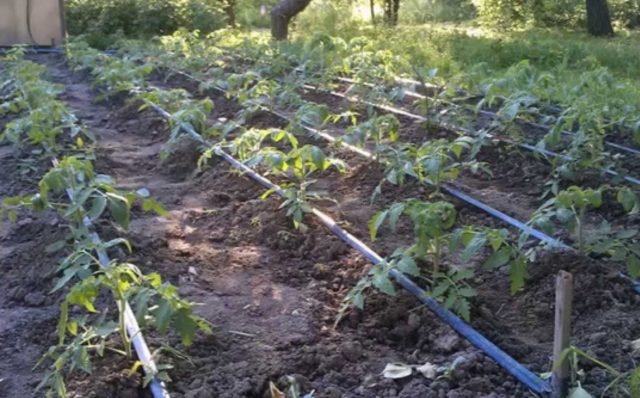
When watering, moisture should not get on the leaves
Pest and disease control methods
To preserve the harvest of tomatoes, it is necessary to carry out preventive spraying of the bushes with fungicides throughout the season. The frequency of treatments is 10-14 days. It is especially important to do this with regular precipitation and sudden changes in day and night temperatures.
To do this, you can use the following drugs:
- "Ordan";
- Fitosporin;
- Hom.
It is also important to soak the roots in a working solution of an insecticide for half an hour before planting seedlings in a permanent place. This will protect young seedlings from the Colorado potato beetle at the initial stage of development. If signs of damage appear in the future, this drug should be used to spray the bushes.
The following tools are best suited:
- Aktara;
- "Confidor Extra".
Conclusion
Tomato Inkas F1 in its characteristics is not inferior to newer varieties, which allows it to remain popular for so many years. Therefore, many gardeners, when choosing tomatoes for further processing, prefer this particular hybrid, despite the fact that they need to purchase planting material annually.
